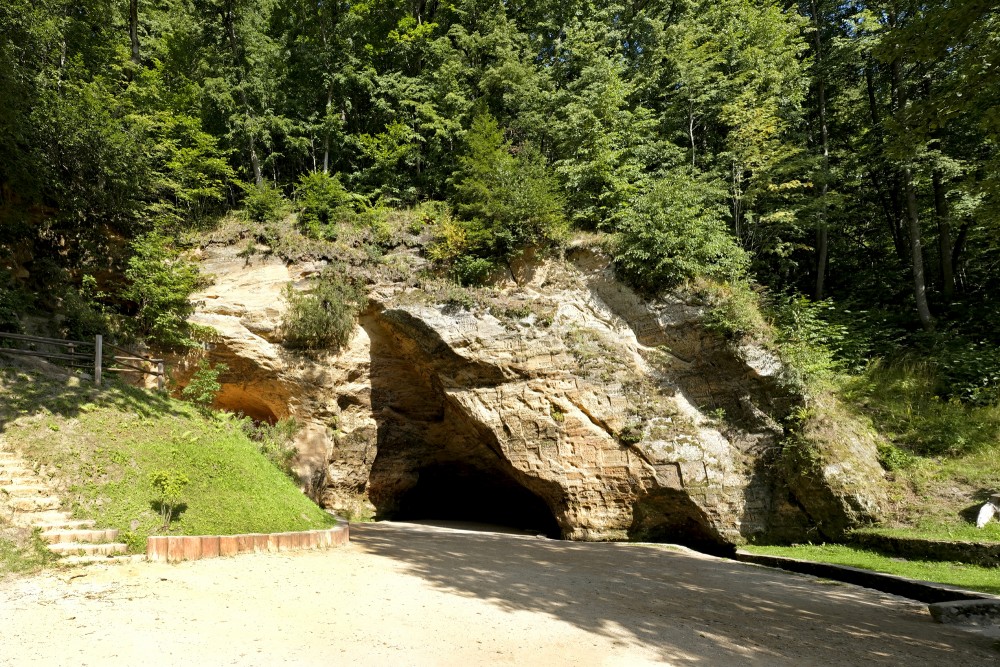Exploring Latvia’s underground is more than a tourist activity—it’s a journey through time and imagination. Every cave, bunker, or tunnel tells a different story that shaped the country’s identity. History, geology, and mystery come together beneath Latvia’s forests and cities. You don’t need to be a hardcore adventurer to enjoy these sites. Many places offer safe, guided tours with fascinating insights and local legends. But for the more daring, there are less-known paths to explore on your own. Just bring a flashlight, sturdy shoes, and a sense of curiosity. Underground Latvia is hidden—but once you go down, you won’t want to come back up.
Discover the Depths of Latvia’s Underground World
Latvia hides an incredible underground world that many travelers overlook. From natural caves to secret bunkers, Latvia’s underground holds centuries of history and intrigue. Adventure seekers and history lovers alike will find much to explore beneath the surface. You’ll find eerie tunnels, forgotten military shelters, and ancient formations shaped by nature. This hidden world offers a new perspective on Latvia beyond its forests and charming towns. Moreover, underground Latvia combines mystery with real stories from past wars and natural phenomena. Tourists love to discover these places, often guided by locals with insider knowledge. So, if you’re ready to go beyond the ordinary, Latvia’s underground is waiting for you.
Key highlights of Latvia’s underground:
-
A mix of natural caves and man-made bunkers
-
Historical military sites from different eras
-
Natural rock formations shaped over thousands of years
-
Secret tunnels under old cities and forts
-
Fascinating legends and folklore tied to underground locations
Gutmanis Cave: The Oldest and Largest in the Baltics
Gutmanis Cave is Latvia’s most famous underground formation and a national treasure. Located in Sigulda, this sandstone cave dates back over 10,000 years. It’s the largest cave in the Baltics, measuring 19 meters deep and 10 meters high. According to legend, a noblewoman named Rose of Turaida was murdered near the cave in 1620. Visitors still read her tragic love story carved into the cave’s walls. Interestingly, people once believed the spring water in the cave had healing powers. Today, the cave draws tourists with its beauty, legends, and natural charm. Every visit to Sigulda should include this mystical stop on the map.
Interesting facts about Gutmanis Cave:
-
Largest cave in the Baltic region
-
Over 10,000 years old sandstone formation
-
Legendary inscriptions dating back to the 1600s
-
Believed healing waters once attracted visitors
-
Popular spot for tourists and history buffs alike
Soviet Bunkers: A Glimpse Into Cold War Secrets
Latvia’s Soviet-era bunkers are chilling reminders of Cold War tensions. Many of these hidden structures were top-secret military command centers or fallout shelters. In Ligatne, you can visit a fully preserved Soviet bunker buried nine meters underground. It features original phones, gas masks, propaganda posters, and secret escape routes. Tour guides wear Soviet uniforms and explain how the government prepared for nuclear disaster. This underground world feels frozen in time, as if expecting an invasion any moment. The experience is eerie, fascinating, and educational all at once. Therefore, it’s a must-see for anyone interested in Latvia’s more recent history.
What you can find in Soviet bunkers:
-
Original Cold War communication equipment
-
Gas masks and survival gear on display
-
Propaganda posters and Soviet-era documents
-
Hidden tunnels and escape routes
-
Guided tours with actors in period costumes
Liepaja’s Northern Forts: Tunnels, Bunkers, and Collapsing Walls
On Latvia’s western coast, the city of Liepaja hides a crumbling military secret. The Northern Forts were built by the Russian Empire in the late 1800s. Their purpose was to defend against sea attacks, but they were later abandoned. Now, you can explore maze-like tunnels, decaying bunkers, and shattered concrete walls. Waves crash into them daily, slowly dragging the fort into the sea. Despite this, the forts remain a popular site for urban explorers and photographers. Sunsets over the ruins create a dramatic, haunting atmosphere you won’t forget. Be cautious, though—some parts can be unstable and dangerous without a guide.
Liepaja Northern Forts at a glance:
-
Built in late 19th century by Russian Empire
-
Designed to protect against sea invasions
-
Network of tunnels and underground bunkers
-
Slowly deteriorating due to sea erosion
-
Popular for photography and urban exploration
Underground Passages of Old Riga: Layers of Forgotten History
Beneath Riga’s Old Town lies a web of underground cellars and tunnels. These spaces date back to medieval times when merchants stored goods beneath their homes. Some tunnels even served as escape routes during sieges or attacks. Although many are closed to the public, a few allow guided tours. Visitors can see centuries-old bricks, medieval drainage systems, and hidden rooms. These underground sites add depth to Riga’s already rich historical experience. They also remind us that cities grow upward and downward at once. Walking through them feels like touching history with your hands.
Old Riga’s underground secrets include:
-
Medieval storage cellars beneath homes
-
Escape routes from historical sieges
-
Ancient drainage and water management systems
-
Limited public access with guided tours
-
Layers of history beneath a modern city
Fascinating Natural Caves Beyond Gutmanis
Latvia features many lesser-known natural caves that attract explorers and scientists. Some are found in the Kurzeme and Vidzeme regions, rich in limestone and sandstone. These caves provide habitats for rare bats and other cave-dwelling creatures. Many caves also show traces of prehistoric human activity, like ancient tools or cave paintings. Speleologists study these formations to understand geological changes in the Baltic area. While some caves are open to tourists, others require special permits for scientific research. Exploring these sites combines adventure with education about nature’s underground wonders. Always follow safety rules and respect fragile ecosystems while visiting caves.
Key facts about Latvia’s natural caves:
-
Located mainly in Kurzeme and Vidzeme
-
Important habitats for rare bat species
-
Evidence of prehistoric human use found inside
-
Studied by scientists for geological research
-
Access varies: open for tourists or restricted
WWII Tunnels and Bunkers: Echoes of Conflict
World War II left a deep mark on Latvia’s underground landscape. Many tunnels and bunkers were constructed by both Soviet and German forces. Some tunnels served as shelter for civilians during air raids. Others acted as secret command centers and supply depots. In places like Daugavpils, you can still visit extensive underground networks. These sites show remnants of wartime graffiti, messages, and improvised living quarters. Guided tours reveal fascinating stories of survival and military strategy. Today, these tunnels remind us of Latvia’s turbulent past and the resilience of its people.
WWII underground highlights:
-
Built by Soviet and German armies
-
Used as civilian air raid shelters
-
Functioned as command centers and storage
-
Wartime graffiti and messages preserved
-
Guided tours explain history and strategy
Myth and Mystery: Ghost Stories from Latvia’s Underground
Latvia’s underground is not just about history and geology; it’s rich in legends too. Many caves and tunnels are believed to be haunted or cursed. Locals tell stories about spirits guarding treasures or wandering lost souls. For example, Gutmanis Cave has tales of a protective ghost linked to the Rose of Turaida legend. Some bunkers are said to have strange noises and unexplained lights. These stories add a mysterious layer to underground explorations. Whether you believe in ghosts or not, the eerie atmosphere is undeniable. Night tours often include these spooky tales, attracting thrill-seekers and paranormal enthusiasts.
Popular underground legends:
-
Ghost of the Rose of Turaida at Gutmanis Cave
-
Spirits guarding hidden treasures in tunnels
-
Unexplained noises in Soviet bunkers
-
Haunted sites featured in local folklore
-
Night tours mixing history with spooky stories
Practical Tips for Exploring Latvia’s Underground
Exploring underground sites in Latvia can be thrilling but requires preparation. First, always check if guided tours are available and book in advance. Many underground places have restricted access or require special permission. Wear comfortable shoes and bring a flashlight, as lighting can be poor underground. Safety is paramount; some sites have uneven floors or low ceilings. Respect the environment and avoid touching fragile rock formations or historic artifacts. Don’t forget to bring a camera but be mindful of flash photography rules. Lastly, listen carefully to guides, especially in bunkers with complex layouts. Proper planning ensures a safe and unforgettable underground adventure.
Important tips for underground visitors:
-
Book guided tours where available
-
Wear sturdy shoes and bring a flashlight
-
Follow safety rules and avoid risky areas
-
Respect historic and natural features
-
Check photography rules in sensitive areas
-
Listen to guides for your safety
Exploring Latvia’s underground is more than a tourist activity—it’s a journey through time and imagination. Every cave, bunker, or tunnel tells a different story that shaped the country’s identity. History, geology, and mystery come together beneath Latvia’s forests and cities. You don’t need to be a hardcore adventurer to enjoy these sites. Many places offer safe, guided tours with fascinating insights and local legends. But for the more daring, there are less-known paths to explore on your own. Just bring a flashlight, sturdy shoes, and a sense of curiosity. Underground Latvia is hidden—but once you go down, you won’t want to come back up.

